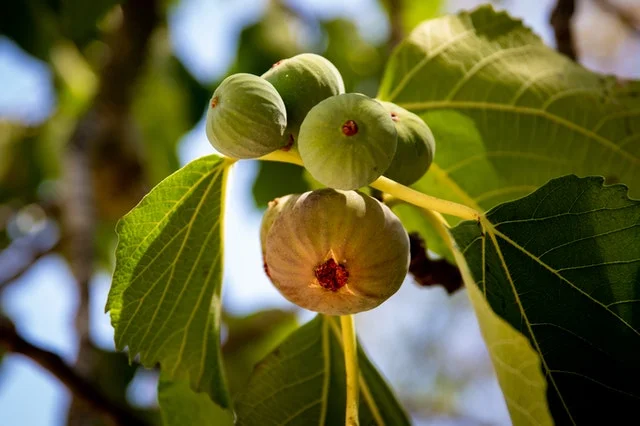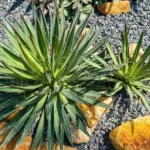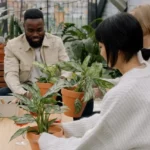Table of Contents
How To Care For dwarf fig tree
The dwarf fig tree is, as the name might suggest, a smaller version of the traditional fig tree.
If you love the taste of figs but don’t have enough room for a big tree, the dwarf fig tree could be the solution to all of your problems.
What does your dwarf fig tree require?
The dwarf fig tree is similar to a bonsai tree. It’s like any other kind of tree, only smaller.
Whilst you will need to take care of it- it is a living thing after all- there won’t be a tremendous amount of time or money that you need to invest in making sure it stays alive and healthy.
In this article, we’ll be looking at the best way to keep your dwarf fig tree alive and healthy. Even though it may take a bit of work, most USA houses will be capable of providing the conditions that a dwarf fig tree needs to survive.
Light Requirements
The best type of lighting for the dwarf fig tree is bright but indirect. You can achieve this by putting it next to a window, but blocking some of the light from that window with other plants or household decorations.
During seasons when the light doesn’t last too long, this little tree can tolerate a bit of shade, and it can even put up with a bit of direct sun.
So long as the majority of light it gets is bright and indirect, it won’t matter too much if it gets some less than perfect light from time to time.
Temperature Requirements
The ideal temperature for the dwarf fig tree is between 16 and 24C. However, if it’s a bit lower, or higher, for a short time, it will be able to recover quickly.
Make sure to place it in a room without any cold draughts. If the temperature is too low, it won’t have the adaptations required to survive, and you may find it dying quicker than it should do.
Soil Requirements
Whatever kind of soil you use, make sure it has good drainage. The type of soil that you use for most potted plants should do the job just fine.
If you want the perfect soil for your tree, consider looking at a soil which is composted. We do, however, respect that this may not be in everyone’s budget.
You could even mix composted soil with regular houseplant soil for the balance between perfection and economics.
Humidity Requirements
Fig trees don’t tend to be the type of trees in constant need of moisturizing. When you see a big fig tree, it will likely be in a country that doesn’t see high humidity levels such as Europe or America.
However, if you want to give it the occasional misting, doing so can help give the leaves an extra spark of colour.
How to Water
It’s best if the soil that your dwarf fig tree sits in is moist at all times. However, it’s essential not to overwater, as this can cause root rot, and end up killing your tree.
When the soil is saturated with water, the roots will not absorb any of it, and just end up going rotten.
The best time to water it is when you notice the soil at the top has become dry.
How to Fertilize
To fertilize your dwarf fig tree, make sure you don’t overdo it. These are small plants, so giving it too much fertilizer can clog up the roots and prevent it from absorbing any one of them.
Once or twice a month will be plenty. And be sure to only give it a weak dose.
The best time to fertilize your dwarf fig tree will be during the growing season. At this time, it will be expecting some form of nutrients, and will therefore be in a better position to absorb them.
Extra tips for the dwarf fig tree
The tips for taking care of a dwarf fig tree are similar to the recommendations for looking after a regular fig tree.
The only difference between the dwarf fig tree and any other kind of fig tree is the size they can grow.
These are some of the most common issues that people might face with their fig tree. Bear in mind whilst there are ways you can decrease the chances of problems, sometimes they occur anyway. This is a guide on what to do when problems pop up.
Pests & Diseases
The most common problem with the dwarf fig tree is root rot caused by overwatering. You can easily prevent this by not overwatering.
Should you find it to have a fungal infection, you can use any plant fungicide to kill the invader.
You may also find creatures such as mealybugs who like too much on the leaves. These and any other bugs can be killed with insecticide. Fig trees are hardy things so you can use more potent chemicals on them than you would be able to on some other trees.
Pruning
By pruning your fig tree, you’ll increase the chances of getting delicious figs from them. In the early spring, remove the branches that spoil the tree’s shape, this is for aesthetic more than health.
In the early summer, take away 5 or six fig leaves so the figs will have some space to grow.
And in the autumn, take away any rotten figs or figs that didn’t ripen. Keeping yucky figs on the tree will increase the chances of getting a fungal infection and attracting pests.
Propagation
Propagation is one of the many ways that plants can reproduce. Here’s what to do if you want to turn one dwarf fig tree into two.
1. Cut off a leaf. Do so with sharp scissors, and make sure to take the leaf off cleanly. A cut in the stem can make the tree more vulnerable to infections.
2. Sharpen the end of the leaf, you do this with your scissors or just a kitchen knife.
3. Allow the cut to dry. Just place it into a dry room, and wait for around 24 hours.
4. Place in water for around 2 weeks until you see roots starting to grow. You don’t need a lot of water. A small pot of water should be fine. As long as you have enough to cover the cut you created, it will start to grow roots.
5. Place the plant root side down into a small pot. Be sure to use the right kind of soil. Baby and grown-up dwarf fig trees thrive in the same type of soil.
6. Keep increasing the size of the pot as the plant grows. It should have enough room to expand its roots, but not so much that room that its roots can’t grow large enough to reach all of the nutrients.
FAQ
How big do dwarf fig trees grow?
The clue is in the name “dwarf” fig tree. These will never grow as big as some of the fig trees you might see in the countryside, or you may even have in your own back garden.
However, even if they won’t ever get that big, they can get between 1.2 and 1.5 metres!
Can you keep fig trees small?
Well, yes and no.
If you go into the countryside and plant a fig tree from one of the fig seeds, you can expect a tree the same sort of size.
However, the dwarf fig tree is a variety that has been specially bred, so it remains small.
How do you take care of a dwarf fig tree?
To take care of your fig tree, make sure it’s in well-draining soil- best if it’s composted. And give it fertilizer once or twice a month during the growing season.
Keep it at the right temperature, and make sure to kill any invaders as soon as they enter your plant.
For the best sunlight, keep it in a room with plenty of natural lighting, but block the direct sun by lining your windowsill with other plants.
Are there dwarf fig trees?
Yes, there are dwarf fig trees.
I’ve literally just written a whole article about it. You’re on a page called “How to care for your dwarf fig tree”, what did you think the answer would be?
What is the best tasting fig tree?
Like with apples, different people are going to like different kinds of figs. However, the most popular varieties are black mission, brown turkey, and sierra.
You can use these to eat the figs raw, or you could make a dessert with them. Fruit always tastes better when it’s homegrown.
How tall do fig trees grow?
Big fig trees can grow up to 20-30 ft tall. However, this article is not about them, this is about the dwarf fig trees.
If you want to grow a big fig tree, you will need to do it outside, and of course, make sure you have a garden big enough to hold them.
Can you eat the figs from a dwarf fig tree?
Yes, you can eat the figs from a dwarf fig tree. They might not be the sweetest variety, but they do make a delicious figgy pudding.
However, don’t be too disheartened if yours doesn’t give you any figs. It could just because you don’t live somewhere with the ideal conditions for producing the fruit.
The purpose of the dwarf fig tree is more ornamental than a source of food.
Photo by Magda Ehlers from Pexels


